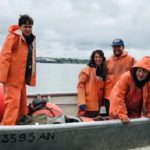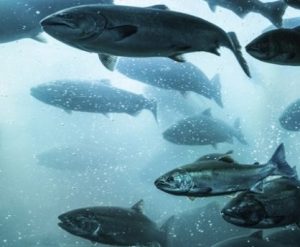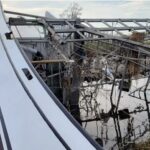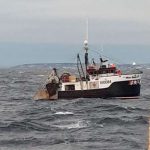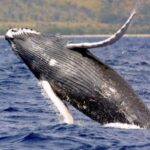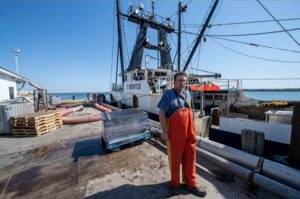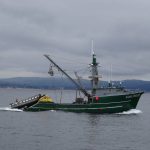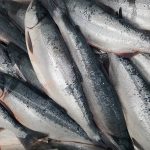Tag Archives: Marine Safety
Fire Safety – So what’s the difference between one portable fire extinguisher and another? The answer might surprise you.
 When I (Steve D’Antonio) recently asked a boatbuilder what type of portable fire extinguisher he installed aboard his boats, the response took me aback. “Does it really matter?” he asked. “Aren’t they all pretty much the same?” Given the alphabet soup by which fires and extinguishers are defined and designated (see “U.S. Fire Classifications”), his answer could be forgiven. However, there are significant differences between such designations. The U.S. Coast Guard requirements for fire extinguishers are, in my opinion, woefully inadequate and should be considered strictly an absolute minimum. A 65-foot vessel is compliant with just one portable B-II and one fixed fire extinguisher (again, I don’t recommend following this guideline). My preference is for a portable ABC unit to be installed in every cabin, along with one clean-agent extinguisher mounted amidships, typically close to the engine and electrical panel. And no fire extinguisher should be more than three steps away. Read the story here 11:22
When I (Steve D’Antonio) recently asked a boatbuilder what type of portable fire extinguisher he installed aboard his boats, the response took me aback. “Does it really matter?” he asked. “Aren’t they all pretty much the same?” Given the alphabet soup by which fires and extinguishers are defined and designated (see “U.S. Fire Classifications”), his answer could be forgiven. However, there are significant differences between such designations. The U.S. Coast Guard requirements for fire extinguishers are, in my opinion, woefully inadequate and should be considered strictly an absolute minimum. A 65-foot vessel is compliant with just one portable B-II and one fixed fire extinguisher (again, I don’t recommend following this guideline). My preference is for a portable ABC unit to be installed in every cabin, along with one clean-agent extinguisher mounted amidships, typically close to the engine and electrical panel. And no fire extinguisher should be more than three steps away. Read the story here 11:22
Wanted: Lobstermen willing to try out life vests
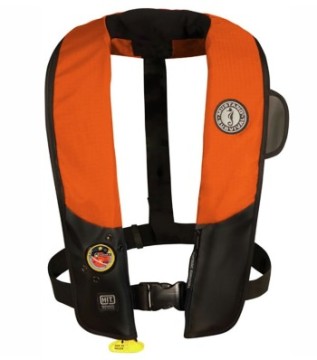 The Northeast Center for Occupational Health and Safety is asking New England lobstermen to help design a life jacket they would actually wear every day. It could be a matter of life or death. Researchers will visit Maine docks this winter to recruit fishermen to try out different kinds of personal flotation devices, or PFDs, for a month to determine which designs work best for daily use aboard a lobster boat. The lobstermen will be paid to test the life vest, and can keep it for their own use once they are done. “This isn’t about making lobstermen wear anything, telling them what to do or regulating anything,” said principal investigator Julie Sorensen of the Northeast Center. “It’s about making PFDs comfortable enough that fishermen want to wear them.” Statistics suggest it will be a hard sell, but well worth it. Researchers at the Northeast Center hope their PFD design study, which is being conducted with Fishing Partnership Support Services of Massachusetts, will help manufacturers tailor flotation devices to the lobster industry and convince fishermen a vest can save their lives without making them miserable or poor. In two years, they will return to the docks with the most popular design for nine-month trials. Read the article here 08:07
The Northeast Center for Occupational Health and Safety is asking New England lobstermen to help design a life jacket they would actually wear every day. It could be a matter of life or death. Researchers will visit Maine docks this winter to recruit fishermen to try out different kinds of personal flotation devices, or PFDs, for a month to determine which designs work best for daily use aboard a lobster boat. The lobstermen will be paid to test the life vest, and can keep it for their own use once they are done. “This isn’t about making lobstermen wear anything, telling them what to do or regulating anything,” said principal investigator Julie Sorensen of the Northeast Center. “It’s about making PFDs comfortable enough that fishermen want to wear them.” Statistics suggest it will be a hard sell, but well worth it. Researchers at the Northeast Center hope their PFD design study, which is being conducted with Fishing Partnership Support Services of Massachusetts, will help manufacturers tailor flotation devices to the lobster industry and convince fishermen a vest can save their lives without making them miserable or poor. In two years, they will return to the docks with the most popular design for nine-month trials. Read the article here 08:07
Scottish Fishermen’s Federation opposes compulsory wearing of lifejackets for commercial fishermen.
 The MAIB said that the four fishermen who lost their lives during three accidents off Orkney, the Western Isles and Pembrokeshire could all have survived had they been wearing personal floating devices (PFDs). With the loss of nine fishermen at sea so far this year, the MAIB said the rate with which fishermen were losing their lives by drowning was showing no sign of abating. Safety officer for the SFF, Derek Cardno said an industry-led a scheme to supply PFDs to every fisherman in Scotland had a strong uptake. He added: “We are not convinced that making the wearing of a PFD a mandatory requirement will make the sole difference that is required. “We believe it is much better to focus on education and creating a new mind-set among fishermen. Read the rest here 13:53
The MAIB said that the four fishermen who lost their lives during three accidents off Orkney, the Western Isles and Pembrokeshire could all have survived had they been wearing personal floating devices (PFDs). With the loss of nine fishermen at sea so far this year, the MAIB said the rate with which fishermen were losing their lives by drowning was showing no sign of abating. Safety officer for the SFF, Derek Cardno said an industry-led a scheme to supply PFDs to every fisherman in Scotland had a strong uptake. He added: “We are not convinced that making the wearing of a PFD a mandatory requirement will make the sole difference that is required. “We believe it is much better to focus on education and creating a new mind-set among fishermen. Read the rest here 13:53
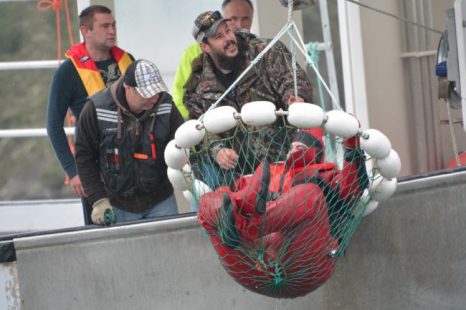
Fishermen urged to be prepared and train for emergencies even before leaving the wharf
When you’ve got someone overboard in the water, that’s not the time to find out you’re not prepared to get them quickly and safely back on the boat. It’s for this reason fishermen are encouraged to be prepared before even leaving the wharf. And it’s for this reason that man overboard drills have been held in some fishing ports in advance of the upcoming LFA 34 lobster season off southwestern Nova Scotia. “We call it ‘Are you ready?’ because as people are getting their boats and their gear and all of their equipment ready, we want them to also make sure all of their safety equipment and training and their crew is ready as well,” says Stewart Franck of the Fisheries Safety Association of Nova Scotia. “People need to be prepared in the event of an emergency.” Franck says PDFs are required to be worn and safety equipment needs to be on boats. Read the story here 11:18
Marine Accidents Investigation Branch: Make wearing lifejackets on fishing boats compulsory
 The wearing of lifejackets on commercial fishing boats should be made compulsory, accident investigators have said. This year had been “particularly bad” for drownings, the Marine Accidents Investigation Branch (MAIB) warned. It had launched investigations into nine deaths of commercial fishermen who were on UK registered vessels in 2016 so far. The MAIB’s chief inspector of marine accidents, Steve Clinch, said: “The MAIB rarely recommends the introduction of new legislation to solve safety problems, but the rate that commercial fishermen are losing their lives due to drowning shows no sign of reducing. “Indeed, this has been a particularly bad year: the MAIB has investigated the deaths of nine commercial fishermen, and today is publishing three reports covering the deaths of four. But he claimed this message “is not getting home” despite a three-year campaign which has seen almost every commercial fisherman receive a free lifejacket. Read the story here 07:26
The wearing of lifejackets on commercial fishing boats should be made compulsory, accident investigators have said. This year had been “particularly bad” for drownings, the Marine Accidents Investigation Branch (MAIB) warned. It had launched investigations into nine deaths of commercial fishermen who were on UK registered vessels in 2016 so far. The MAIB’s chief inspector of marine accidents, Steve Clinch, said: “The MAIB rarely recommends the introduction of new legislation to solve safety problems, but the rate that commercial fishermen are losing their lives due to drowning shows no sign of reducing. “Indeed, this has been a particularly bad year: the MAIB has investigated the deaths of nine commercial fishermen, and today is publishing three reports covering the deaths of four. But he claimed this message “is not getting home” despite a three-year campaign which has seen almost every commercial fisherman receive a free lifejacket. Read the story here 07:26
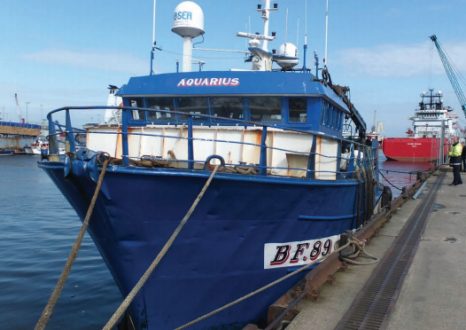
Safety failings on fishing trawler Aquarius led to fisherman’s death
An investigation has revealed that the twin rig trawler, Aquarius was “a poorly run vessel”, issued with 137 deficiencies in the years prior to the death of Nuertey Annang. The Ghanaian-born fisherman, who was 47, died on 17 August 2015 when a rope stopper parted and he was thrown “violently” overboard. The vessel was around two miles east of Aberdeen harbour in Scotland when the incident happened. Despite searches, Annang’s body was never found. A report by the Marine Accident Investigation Branch (MAIB) identifies that “The skipper and owners of Aquarius consistently prioritised the catching of fish over the safety of the vessel and its crew. This resulted in the promotion of a poor safety culture.” It found that the crew, nor their vessel “had been adequately prepared to deal with such emergency situations.” Read the story here 13:40
Free lifejackets with satellite tracking devices for Plymouth fishermen?
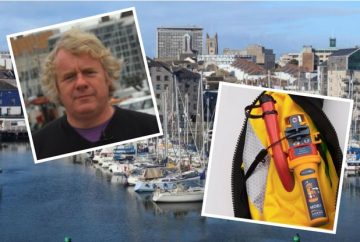 Fishermen could soon be issued with free lifejackets featuring personal satellite tracking devices which could help save lives. Plymouth City Council is considering applying to a European fund for money to buy jackets equipped with locator beacons. Cllr Tudor Evans, Labour Party leader, will table a motion on the subject at Monday’s full council meeting. “These things save lives,” Cllr Evans said. “We spend a lot of money on safe cycling and safe walking, and that’s all very good on land, but there’s money available to improve the possibility of saving fishermen’s lives. “As we are a massive fishing industry here, we thought it would be a good idea and it seems to have gone down well.” “The important thing about this is they improve the prospect of being found in the water,” he said. Read the story here 12:59
Fishermen could soon be issued with free lifejackets featuring personal satellite tracking devices which could help save lives. Plymouth City Council is considering applying to a European fund for money to buy jackets equipped with locator beacons. Cllr Tudor Evans, Labour Party leader, will table a motion on the subject at Monday’s full council meeting. “These things save lives,” Cllr Evans said. “We spend a lot of money on safe cycling and safe walking, and that’s all very good on land, but there’s money available to improve the possibility of saving fishermen’s lives. “As we are a massive fishing industry here, we thought it would be a good idea and it seems to have gone down well.” “The important thing about this is they improve the prospect of being found in the water,” he said. Read the story here 12:59

PFDs That Work – Personal Flotation Devices Prevent Fishermen Deaths
Researchers from the NIOSH Alaska Pacific Office asked commercial fishermen from 4 gear groups (crabbers, trawlers, longliners, gillnetters) to rate the comfort and acceptability of six modern personal flotation devices (PFDs). About 200 fishermen evaluated various PFDs for one month while working on deck so that wearable PFDs could be identified.1 Fishermen evaluated inflatable PFDs and foam PFDs that were either integrated into their rain gear or were worn in addition to raingear. Since deck work and fishing season varies for each gear group, fishermen had different preferences. Each gear group identified PFDs that are comfortable and easy to wear and are currently available for sale. The key to finding the proper PFD is to try on many to make sure they will work for the specific activities related to your type of fishing. Working on crowded decks and in close proximity to gear make it vitally important that a PFD not become a snagging hazard. Fishermen who work in colder weather may prefer a PFD with more foam padding for insulation against the weather. Read the rest here 14:53
Marine Safety: The new ACR Electronics Firefly PRO rescue light
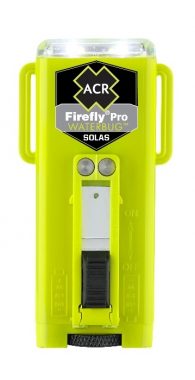 The new Firefly PRO rescue lights by US-owned ACR Electronics are extremely bright, reliable LED strobe lights which, claims ACR, ensure the best chance of visually alerting rescue services for accurate location in an emergency. The powerful lights feature a long battery life and they are targeted at workers at offshore wind farms, in the oil and gas industries, deep sea fishing and other commercial sectors. Available in two versions for manual or water-activated operation, the SOLAS-approved lights use wide light emission LEDs to produce a 360 degree beam of light that is more than 41 candelas bright, allowing for visibility of over 3.5 miles. The compact new strobe lights operate continuously for more than 56 hours with standard alkaline batteries, or for 28 hours using the steady-on feature, due to a light output power management system featuring ACR’s new microprocessor and energy efficient electronics. Read the rest here 11:26
The new Firefly PRO rescue lights by US-owned ACR Electronics are extremely bright, reliable LED strobe lights which, claims ACR, ensure the best chance of visually alerting rescue services for accurate location in an emergency. The powerful lights feature a long battery life and they are targeted at workers at offshore wind farms, in the oil and gas industries, deep sea fishing and other commercial sectors. Available in two versions for manual or water-activated operation, the SOLAS-approved lights use wide light emission LEDs to produce a 360 degree beam of light that is more than 41 candelas bright, allowing for visibility of over 3.5 miles. The compact new strobe lights operate continuously for more than 56 hours with standard alkaline batteries, or for 28 hours using the steady-on feature, due to a light output power management system featuring ACR’s new microprocessor and energy efficient electronics. Read the rest here 11:26
Ocean Signal presents new M100 and M100X Maritime Survivor Locating Device with AIS
 The M100 and M100X Maritime Survivor Locating Device (MSLD) with Automatic Identification System (AIS) and 121.5MHz homing beacon. Designed for the professional marine market and suitable for all offshore and lone workers, the rugged man overboard devices are designed to unobtrusively attach to immersion suits and inflatable life jackets ready for automatic activation on inflation of the jacket or on submersion when fitted to the suit. Available in two versions, the M100X is designed to meet the European ATEX directive and the IECEx approval for use in Zone 2 explosive atmospheres and is ideal for use in environments such as oil rigs, offshore platforms or other hazardous areas. The M100 device is suitable for all other commercial use, such as wind farm users, off shore workers, fishing fleets and fish farm workers, and helicopter transfers. Read the rest here 08:29
The M100 and M100X Maritime Survivor Locating Device (MSLD) with Automatic Identification System (AIS) and 121.5MHz homing beacon. Designed for the professional marine market and suitable for all offshore and lone workers, the rugged man overboard devices are designed to unobtrusively attach to immersion suits and inflatable life jackets ready for automatic activation on inflation of the jacket or on submersion when fitted to the suit. Available in two versions, the M100X is designed to meet the European ATEX directive and the IECEx approval for use in Zone 2 explosive atmospheres and is ideal for use in environments such as oil rigs, offshore platforms or other hazardous areas. The M100 device is suitable for all other commercial use, such as wind farm users, off shore workers, fishing fleets and fish farm workers, and helicopter transfers. Read the rest here 08:29
Global Recall on Kannad SAFELINK EPIRBs
 U.S. Coast Guard issued an urgent marine safety alert for shipowners and operators announcing the recall of certain Kannad SAFELINK brand Emergency Position Indicating Radio Beacons (EPIRBs). The devices have a yellow plastic body, which may age prematurely when subjected to “specific environmental conditions,” which could result in the beacon not operating in an emergency, the USCG said. The Coast Guard strongly encouraged operators to check their Kannad-branded EPIRB against an online serial number list to determine whether it was among the models affected. The product number can be found on the back of the EPIRB, and entered at http://www.safelinkepirbsupport.co.uk Read the rest here 20:56
U.S. Coast Guard issued an urgent marine safety alert for shipowners and operators announcing the recall of certain Kannad SAFELINK brand Emergency Position Indicating Radio Beacons (EPIRBs). The devices have a yellow plastic body, which may age prematurely when subjected to “specific environmental conditions,” which could result in the beacon not operating in an emergency, the USCG said. The Coast Guard strongly encouraged operators to check their Kannad-branded EPIRB against an online serial number list to determine whether it was among the models affected. The product number can be found on the back of the EPIRB, and entered at http://www.safelinkepirbsupport.co.uk Read the rest here 20:56
Safety switch could have saved this young Fisherman’s life from electrocution
 An inquest into the death of a man electrocuted on a Top End prawn trawler has heard a safety switch could have saved his life. Ryan Donoghue, 20, was using an angle grinder on the deck of Austral Fisheries’ Newfish 1 to cut rusted shackles when he was hit by a wave and electrocuted. Counsel assisting the Coroner, Kelvin Currie, told the inquest the grinder had been plugged into a socket without a safety switch, known as a residual current device (RCD). Newfish 1 was about 11 hours from the Arnhem Land coast when the accident occurred in November 2013. Read the rest here 09:11
An inquest into the death of a man electrocuted on a Top End prawn trawler has heard a safety switch could have saved his life. Ryan Donoghue, 20, was using an angle grinder on the deck of Austral Fisheries’ Newfish 1 to cut rusted shackles when he was hit by a wave and electrocuted. Counsel assisting the Coroner, Kelvin Currie, told the inquest the grinder had been plugged into a socket without a safety switch, known as a residual current device (RCD). Newfish 1 was about 11 hours from the Arnhem Land coast when the accident occurred in November 2013. Read the rest here 09:11
Nunavut officials press for Arctic search and rescue base – “Within the last six months we’ve had two near disasters”
 Nunavut’s fishing industry is renewing its call for a search and rescue base in the North after two recent major incidents where fishing vessels were in distress in Arctic waters for hours before help arrived. “Within the last six months we’ve had two near disasters,” said Jerry Ward, chair of the Nunavut Offshore Allocation Holders Association. Last September, the Atlantic Charger fishing vessel took on water near the mouth of Frobisher Bay. The nine-person crew was rescued by a Danish ship. Then last month, the F/V Saputi ran into ice and took on water. Hercules aircraft from Nova Scotia dropped pumps as the Danish Navy escorted the damaged ship and crew of 30 to Nuuk, Greenland. Read the rest here 08:04
Nunavut’s fishing industry is renewing its call for a search and rescue base in the North after two recent major incidents where fishing vessels were in distress in Arctic waters for hours before help arrived. “Within the last six months we’ve had two near disasters,” said Jerry Ward, chair of the Nunavut Offshore Allocation Holders Association. Last September, the Atlantic Charger fishing vessel took on water near the mouth of Frobisher Bay. The nine-person crew was rescued by a Danish ship. Then last month, the F/V Saputi ran into ice and took on water. Hercules aircraft from Nova Scotia dropped pumps as the Danish Navy escorted the damaged ship and crew of 30 to Nuuk, Greenland. Read the rest here 08:04
Gulf Nova Scotia Fleet Planning Board is buying 1,038 PFDs for its members!
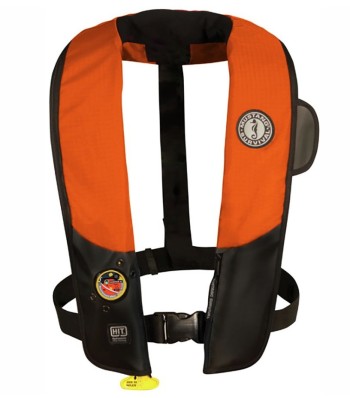 Leonard LeBlanc has been a long-time champion of safety measures in the fishing industry. The retired fisherman lost his five-year-old son, Matthew, in a boating accident 26 years ago. The child was killed in an explosion on LeBlanc’s fishing boat off Chéticamp. “Since then, it’s kind of been my thing, to talk about safety, to try to help someone else from walking in my boots,” he said. LeBlanc retired from fishing last year, but remains secretary/treasurer of the Gulf Nova Scotia Fleet Planning Board. This month the group is investing in safety by spending part of the proceeds from its federal shrimp allocation on personal flotation devices. Read the rest here 06:51
Leonard LeBlanc has been a long-time champion of safety measures in the fishing industry. The retired fisherman lost his five-year-old son, Matthew, in a boating accident 26 years ago. The child was killed in an explosion on LeBlanc’s fishing boat off Chéticamp. “Since then, it’s kind of been my thing, to talk about safety, to try to help someone else from walking in my boots,” he said. LeBlanc retired from fishing last year, but remains secretary/treasurer of the Gulf Nova Scotia Fleet Planning Board. This month the group is investing in safety by spending part of the proceeds from its federal shrimp allocation on personal flotation devices. Read the rest here 06:51
Fishermen urged to wear lifejackets in new safety campaign
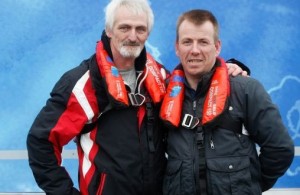 Whelk fisherman David Massey knew he was wearing no ordinary lifejacket when he hit the water unexpectedly about 11km off the coast of Wicklow in April last year. His personal flotation device (PFD) was fitted with an emergency beacon which would inform the rescue authorities of his precise location, his name, his address and his next-of-kin. “Still, I thought we were gone,” the 42-year-old, originally from Co Limerick, said. Mr Massey was one of three crew on the MFV Lavicca, which capsized off the Wicklow coast on April 15th, 2015. Read the article here 19:12
Whelk fisherman David Massey knew he was wearing no ordinary lifejacket when he hit the water unexpectedly about 11km off the coast of Wicklow in April last year. His personal flotation device (PFD) was fitted with an emergency beacon which would inform the rescue authorities of his precise location, his name, his address and his next-of-kin. “Still, I thought we were gone,” the 42-year-old, originally from Co Limerick, said. Mr Massey was one of three crew on the MFV Lavicca, which capsized off the Wicklow coast on April 15th, 2015. Read the article here 19:12
A new immersion suit claims it can keep you alive up to 24 hours in freezing water. So we tested it.
 When a ship sinks at sea and you’re thrown into the water, hypothermia sets in quickly, so every second counts. An immersion suit is designed to buy you time. Constructed like a surfer’s wetsuit, it keeps you warm for up to three to six hours, until help (hopefully) arrives. Even a plunge into 50-degree water will induce hypothermia within 60 minutes. The Stearns I950 ThermaShield 24+ bills itself as the most advanced immersion suit made, one that can extend that crucial in-the-water survival window up to 24 hours, and keep you alive even in freezing (32°F) water. Read the article here 16:00
When a ship sinks at sea and you’re thrown into the water, hypothermia sets in quickly, so every second counts. An immersion suit is designed to buy you time. Constructed like a surfer’s wetsuit, it keeps you warm for up to three to six hours, until help (hopefully) arrives. Even a plunge into 50-degree water will induce hypothermia within 60 minutes. The Stearns I950 ThermaShield 24+ bills itself as the most advanced immersion suit made, one that can extend that crucial in-the-water survival window up to 24 hours, and keep you alive even in freezing (32°F) water. Read the article here 16:00
MV Leviathan II tragedy: Official rescue role for First Nations urged
 A marine safety expert says coastal First Nations should be given an official role in the province’s search and rescue services. Advocates say the capsizing of whale-watching boat, the MV Leviathan II, off the Tofino coast and the resulting rescue shows how crucial First Nations communities are in emergencies on the water. Two Ahousaht fishermen were the only people who spotted a rocket flare shot off the capsized boat and rushed to the scene, triggering a rescue effort that pulled 21 survivors from frigid B.C. waters. Read the rest here 09:12
A marine safety expert says coastal First Nations should be given an official role in the province’s search and rescue services. Advocates say the capsizing of whale-watching boat, the MV Leviathan II, off the Tofino coast and the resulting rescue shows how crucial First Nations communities are in emergencies on the water. Two Ahousaht fishermen were the only people who spotted a rocket flare shot off the capsized boat and rushed to the scene, triggering a rescue effort that pulled 21 survivors from frigid B.C. waters. Read the rest here 09:12
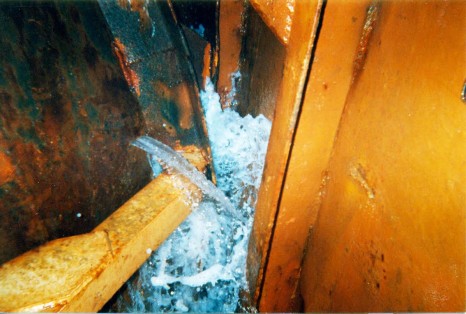
Damage Control For Flooding (Some notes on what to do when you have that sinking feeling)
If you engineer fishing vessels you are going to be expected to have the skills to lead damage control efforts, repair crews, control flooding, and even seal off compartments in order to prevent sinking. All of this needs to be done in a hurry so putting a little thought into how you intend to deal with flooding in some of the areas of your vessel and taking stock of any emergency pumps, equipment, and the condition of water tight doors and compartment bulk heads may be the difference between life or death. Read the rest here with 9 images. By John Johnson. 17:20
MSU boat safety training helps save two fishermen
 The Atlantic hurricane that sunk the cargo ship El Faro in early October highlights the need for sailors to be trained in how to react in an emergency. Dave Burrage, Mississippi State University Extension professor of marine resources at the Coastal Research and Extension Center, is trained to certify marine safety instructors who are sailors on commercial vessels. Two Mississippi sailors he trained survived an on-the-water collision that sunk one boat in the Gulf of Mexico last year. “Two fishermen were involved in a collision at night, and one of the boats sank,”,, Read the rest here 14:48
The Atlantic hurricane that sunk the cargo ship El Faro in early October highlights the need for sailors to be trained in how to react in an emergency. Dave Burrage, Mississippi State University Extension professor of marine resources at the Coastal Research and Extension Center, is trained to certify marine safety instructors who are sailors on commercial vessels. Two Mississippi sailors he trained survived an on-the-water collision that sunk one boat in the Gulf of Mexico last year. “Two fishermen were involved in a collision at night, and one of the boats sank,”,, Read the rest here 14:48
VIKING’s Helpline for New US Coast Guard Coastal Safety Rules
Marine safety equipment manufacturer and servicing provider VIKING Life-Saving Equipment A/S says it’s worried that commercial vessels operating in North American coastal waters and waterways simply won’t be able to sail when new USCG safety regulations come into force on 26 February 2016. The company has released evacuation equipment packages that ensure vessel operators can reliably comply with the new regulations and it has set up a dedicated toll free 1-855 helpline number to assist them, but VIKING’s VP Americas, Al Osle, says there are still operators who haven’t realized that the time to act is now. ACT NOW! Read the rest here 18:30
Coast Guard Highlights Importance of Marine Safety
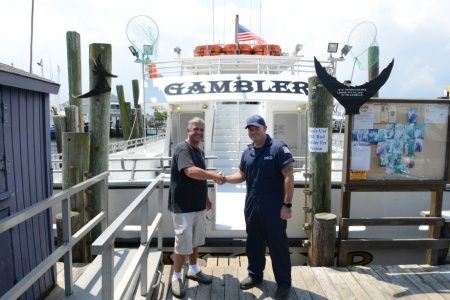 CAPE MAY – Marine Safety is one of the U.S. Coast Guard’s important 11 statutory missions, and is the area where the Coast Guard interacts the most with commercial vessels. Coast Guard personnel work to ensure commercial vessel safety by inspecting vessels under construction, inspecting vessels in service, investigating marine casualties, and licensing professional mariners. Sector Delaware Bay and its marine inspectors play a pivotal role in this mission. Read the rest here 09:15
CAPE MAY – Marine Safety is one of the U.S. Coast Guard’s important 11 statutory missions, and is the area where the Coast Guard interacts the most with commercial vessels. Coast Guard personnel work to ensure commercial vessel safety by inspecting vessels under construction, inspecting vessels in service, investigating marine casualties, and licensing professional mariners. Sector Delaware Bay and its marine inspectors play a pivotal role in this mission. Read the rest here 09:15
Former investigator is convinced hull damage sank the F/V Arctic Rose
 In 2001, a remote-operated camera on the bottom of the Bering Sea captured ghostly images of the sunken Arctic Rose fishing vessel, including footage of a narrow, dark splotch along the hull. Coast Guard officers who investigated the April 2, 2001, sinking eventually concluded that the video showed only an area of peeled paint, and was of no consequence in a calamity they say was most likely the result of flooding through an open hatch door. But a former National Transportation Safety Board investigator initially assigned to the case came to a radically different view of what went wrong; this theory was never publicly disclosed. Read the rest here Video-Trial Graphics – Arctic Rose Sinking 09:23
In 2001, a remote-operated camera on the bottom of the Bering Sea captured ghostly images of the sunken Arctic Rose fishing vessel, including footage of a narrow, dark splotch along the hull. Coast Guard officers who investigated the April 2, 2001, sinking eventually concluded that the video showed only an area of peeled paint, and was of no consequence in a calamity they say was most likely the result of flooding through an open hatch door. But a former National Transportation Safety Board investigator initially assigned to the case came to a radically different view of what went wrong; this theory was never publicly disclosed. Read the rest here Video-Trial Graphics – Arctic Rose Sinking 09:23
South West fishermen safer at sea thanks to Weymouth-designed device
 SOUTH West fishermen will now be safer at sea thanks to a device designed in Weymouth. In the wake of the Purbeck Isle tragedy, where three lives were lost when a local fishing vessel went out to sea but never returned, Weymouth fisherman Hugh Cox said he felt compelled to try and do something to help. Read the rest here 07:49
SOUTH West fishermen will now be safer at sea thanks to a device designed in Weymouth. In the wake of the Purbeck Isle tragedy, where three lives were lost when a local fishing vessel went out to sea but never returned, Weymouth fisherman Hugh Cox said he felt compelled to try and do something to help. Read the rest here 07:49
More fishermen using personal flotation devices; still room for improvement
 Commercial fishing has been getting safer as more people heading to sea are willing to wear personal flotation devices, says a fishing safety consultant with the Workers’ Compensation Board of Nova Scotia. “Most folks are doing a good job,” says Tommy Harper. He was in Eastern Passage on Thursday, leading a man-overboard exercise for fishermen and an education session on personal flotation devices. Read the rest here 22:32
Commercial fishing has been getting safer as more people heading to sea are willing to wear personal flotation devices, says a fishing safety consultant with the Workers’ Compensation Board of Nova Scotia. “Most folks are doing a good job,” says Tommy Harper. He was in Eastern Passage on Thursday, leading a man-overboard exercise for fishermen and an education session on personal flotation devices. Read the rest here 22:32
On Sale at Hercules SLR, New Bedford – Buy 5 DSPAs, Save $500 Bucks!
 DSPA Systems Benefits – Easy to install and maintain – Fit for a wide variety of applications – Deploys quickly and safely – Does not need to be at seat of fire – Self-contained unit that does not require construction or piping – Non-pressurized – Does not affect oxygen levels – Does not deplete ozone – Is cost-effective in comparison to other systems (CO2, Halon, foam) – Has a shelf-life of fifteen (15) years 20:47
DSPA Systems Benefits – Easy to install and maintain – Fit for a wide variety of applications – Deploys quickly and safely – Does not need to be at seat of fire – Self-contained unit that does not require construction or piping – Non-pressurized – Does not affect oxygen levels – Does not deplete ozone – Is cost-effective in comparison to other systems (CO2, Halon, foam) – Has a shelf-life of fifteen (15) years 20:47
Researchers explore fishing-related injuries and prevention strategies
 Handling frozen fish caused nearly half of all injuries aboard commercial freezer-trawlers and about a quarter of the injuries on freezer-longliner vessels operating off the coast of Alaska, new research from Oregon State University shows. However, an analysis of 12 years of injury data showed that fishing on the freezer vessels was less risky than many other types of commercial fishing,,, Read more here 09:06
Handling frozen fish caused nearly half of all injuries aboard commercial freezer-trawlers and about a quarter of the injuries on freezer-longliner vessels operating off the coast of Alaska, new research from Oregon State University shows. However, an analysis of 12 years of injury data showed that fishing on the freezer vessels was less risky than many other types of commercial fishing,,, Read more here 09:06
Maine lobstermen fall overboard more often than people may think
 “It’s a lot more common than people know,” said David Cousens of Spruce Island, president of the 1,200-member Maine Lobstermen’s Association. “I’ve almost gone over twice in 40 years. I had the rope around my feet both times, and luckily had a sternman who acted quickly and got me undone.” Read more@portlandpress 11:11
“It’s a lot more common than people know,” said David Cousens of Spruce Island, president of the 1,200-member Maine Lobstermen’s Association. “I’ve almost gone over twice in 40 years. I had the rope around my feet both times, and luckily had a sternman who acted quickly and got me undone.” Read more@portlandpress 11:11
Miss Ally captain’s mother pushes for personal tracking devices – Fishermen’s bodies never found after boat capsized in storm
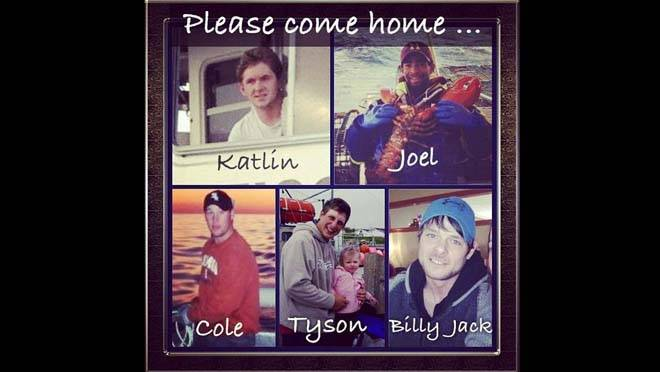
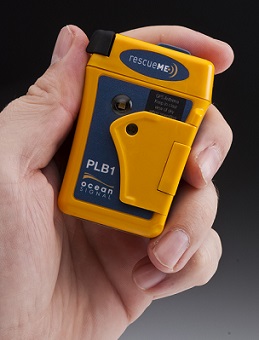 Della Sears wants fishermen to consider buying and wearing a personal beacon — a tracking device the size of a smartphone and a bit thicker. It can be attached to clothing and emits a signal that bounces off a satellite and sends a message to the Joint Rescue Co-ordination Centre in Halifax. Read more@cbcnews 06:45
Della Sears wants fishermen to consider buying and wearing a personal beacon — a tracking device the size of a smartphone and a bit thicker. It can be attached to clothing and emits a signal that bounces off a satellite and sends a message to the Joint Rescue Co-ordination Centre in Halifax. Read more@cbcnews 06:45






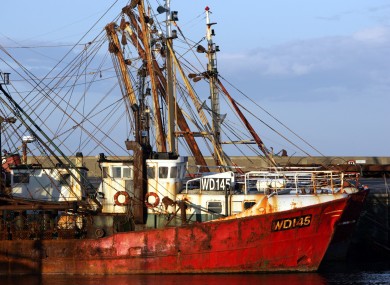
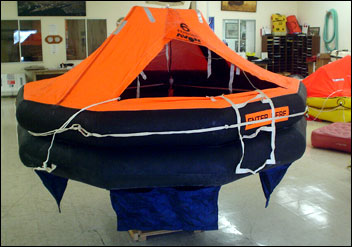 Fishermen in Southeast Alaska (and Nation Wide) are learning about new safety requirements for life rafts that take effect later this month. The changes are included in past Coast Guard re-authorization bills and will mean smaller fishing boats will have to have a life raft to go three miles offshore. Coast Guard commercial fishing vessel examiners were in Petersburg this month offering free dockside exams for boats getting ready to go out in a variety of fisheries this month and next. The examiners held a question and answer session to brief fishermen on new requirements and spent a good part of their time answering questions about the new life raft requirement for smaller fishing boats.
Fishermen in Southeast Alaska (and Nation Wide) are learning about new safety requirements for life rafts that take effect later this month. The changes are included in past Coast Guard re-authorization bills and will mean smaller fishing boats will have to have a life raft to go three miles offshore. Coast Guard commercial fishing vessel examiners were in Petersburg this month offering free dockside exams for boats getting ready to go out in a variety of fisheries this month and next. The examiners held a question and answer session to brief fishermen on new requirements and spent a good part of their time answering questions about the new life raft requirement for smaller fishing boats. 


























